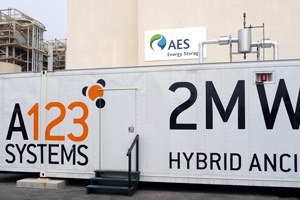SOMMER: So these are the people that are keeping the lights on.
HAWKINS: Yep, this is the real-time operations.
SOMMER: This is the California Independent System Operator or ISO, where Dave Hawkins is the Lead Renewables Power Engineer, though he recently retired. The ISO is the traffic cop of the state's electric grid. It's their job to forecast how much electricity the state needs and to make sure it's supplied. And they do it every four seconds.
HAWKINS: Our electric grid today, as we've built it and managed it, is a huge "just in time" delivery system. Just in time.
SOMMER: Hawkins says in order for the lights to come on when we flip the switch, energy supply and demand have be in perfect balance. But since the demand for power is continually changing, they're continually rebalancing the grid.
HAWKINS: If we don't get all the numbers correct, then there's some major imbalances and some unpleasantness that happens in the system.
SOMMER: Today, most of the state's energy comes from natural gas plants, which produce a steady power supply. But record amounts of wind and solar power are being switched on every year. And because the sun disappears behind clouds and the wind dies down, renewable power is variable.
HAWKINS: The curves that are showing up so far are pretty erratic. You'll see 40, 50, 60 percent change in the output in a very short amount of time. And it not only goes down, but it will also then come back up.
SOMMER: Better weather forecasting could help the ISO anticipate the fluctuations. But Hawkins says they'll need something else to fill in the gaps.
PRAVEEN KATHPAL: We're looking at what we call Project Sano. It's a 2 megawatt energy storage unit.
SOMMER: Just next to the Pacific Ocean in Huntington Beach, Praveen Kathpal of AES Energy Storage shows me one of the biggest batteries in the state. From the outside, it looks like a simple shipping container.
KATHPAL: It's pretty unspectacular to look at, uh, which is good. We don't like excitement in the power business if we can avoid it.
SOMMER: The container is packed with small lithium-ion battery cells.
KATHPAL: There are approximately 83,000 of those cells within this container.
SOMMER: The battery only holds enough power for 1,500 homes, but Kathpal says that's not the point. Batteries are fast. This one can change its output every four seconds. That's a level of responsiveness that a power plant can't match.
KATHPAL: Yeah, it allows you to do things that you really couldn't imagine being able to do before. All of a sudden, you're able to provide a level of power immediately and with certainty.
SOMMER: Grid operators could "dial up" this power to smooth out the second-to-second fluctuations on the grid. Kathpal says he sees a booming market for energy storage like this. And he's not alone.
DAN RASTLER: Energy storage is really undergoing a renaissance right now.
SOMMER: Dan Rastler is with the Energy Storage program at the Electric Power Research Institute, a research group in Palo Alto sponsored by the nation's utilities. He says longer-term energy storage will also be important when it comes to wind power.
RASTLER: Unfortunately, a lot of the wind blows at night and we don't want to spill wind, you know. We've made this investment in renewable energy.
SOMMER: If nighttime wind power could be stored several hours, grid operators could use it during the day when energy demand is highest. Rastler says there are other storage technologies that could use excess energy, like pumping water uphill to reservoirs for hydro power or compressing air that could be released to run power turbines. Still, there's one big hurdle that's held energy storage back.
RASTLER: The reason you don't see a lot of storage deployed right now is the cost issue.
SOMMER: At its best, battery storage is twice as expensive as traditional power sources. That's kept most utilities away. But Rastler says the federal stimulus funding could change the game.
RASTLER: It's been huge. I believe it's around 250 million of stimulus funding really is jumpstarting a number of key demonstrations.
SOMMER: Several of those demonstrations are being lead by California's largest utilities. But given the costs, scaling up energy storage could take decades and California's utilities are on a tight timeline. The state legislature is also debating an energy storage bill that's the first of its kind in the nation. If passed, it would require the state to begin setting energy storage goals for 2020-- the same year the renewable energy goal comes due. For Quest, I'm Lauren Sommer, KQED News.
 This week, we continue our series "33 by 20," a look a California's ambitious goal of getting 33 percent of its electricity from renewable energy by 2020. Solar and wind power are booming across the state. But these renewables are intermittent and that causes problems on the state's electric grid. So, California utilities are looking to smooth out those bumps by doing something rarely done on the grid today: storing electricity. Lauren Sommer has more.
This week, we continue our series "33 by 20," a look a California's ambitious goal of getting 33 percent of its electricity from renewable energy by 2020. Solar and wind power are booming across the state. But these renewables are intermittent and that causes problems on the state's electric grid. So, California utilities are looking to smooth out those bumps by doing something rarely done on the grid today: storing electricity. Lauren Sommer has more.